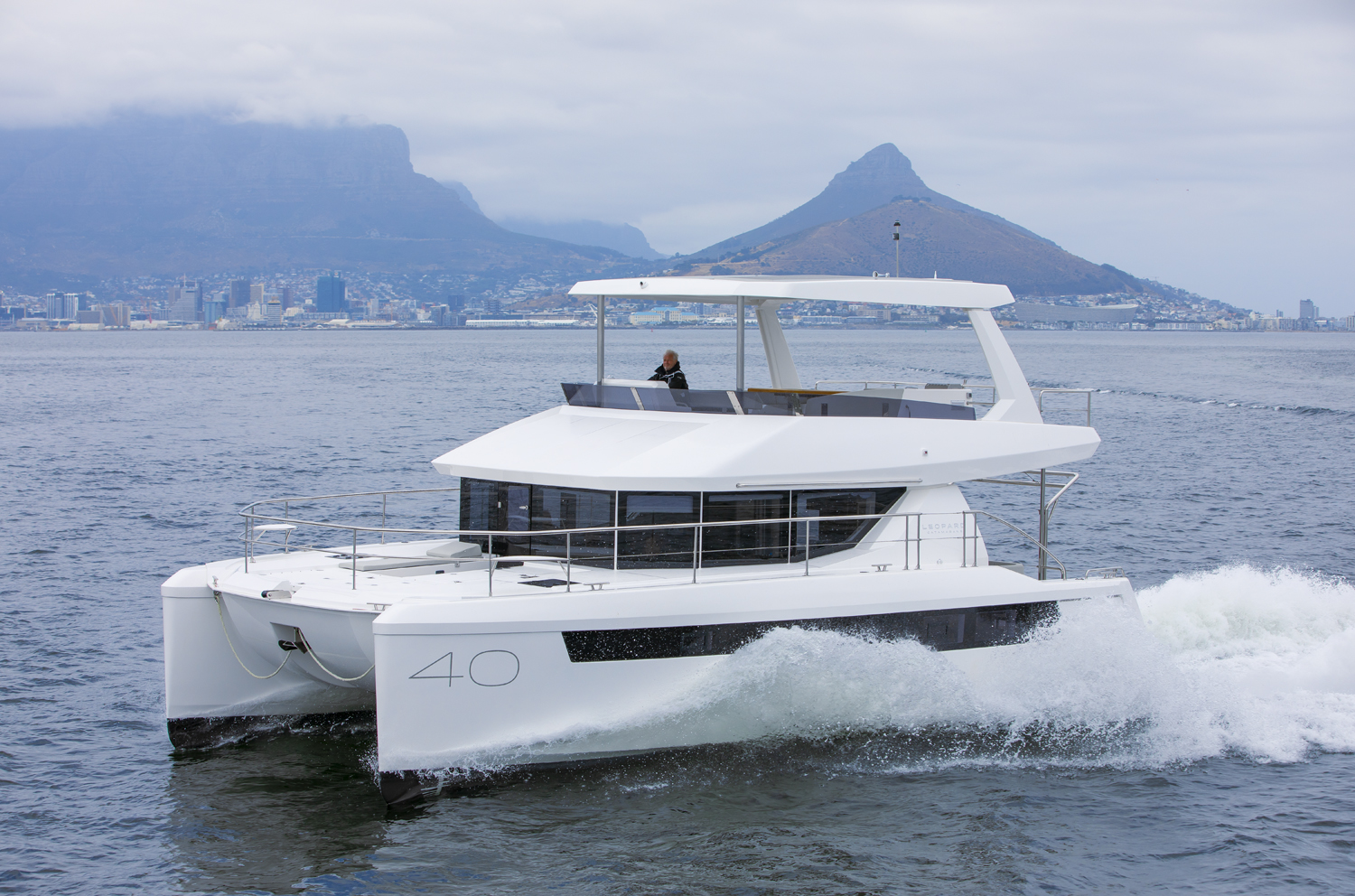Advertisement
Advertisement
High-Performance Catamaran: Skater 40 Super Sport Review
Award-winning catamaran is superb in every aspect.
June 19, 2007
As editors of Powerboat, every so often we are lucky enough to get a front-row seat as test drivers Bob Teague and John Tomlinson work together to run a high-performance offshore catamaran. The treat was extra special this time around in the new pleasure-version 40 Super Sport from Douglas Marine.
Not only did the test drivers agree that the 40-foot Skater was as good as they come but they were at ease in the deep-tunnel catamaran, even when approaching 160 mph. And with a new custom wraparound windshield, it was easy to collect performance numbers and observe the subtle communication between Teague and Tomlinson. In fact, it made riding in the often-gusty, rear middle seat quite enjoyable.
Performance
Owner Vinny Rifice delivered his Bad Skater to Sarasota, Fla., for the East Coast leg of our Performance Trials just a week after running his second poker run in the 40-footer. Rifice, a New Yorker who has owned a 32- and a 36-foot Skater, said he had the boat built for poker runs so he could run with the "bigger boats in rougher water."
That he'll be able to do. In fact, many "bigger" boats won't be able to hang with this five-step catamaran and its twin 1,100-horsepower J.C. Performance engines. Hooked up to Mercury Racing No. 6 dry-sump drives with a 1.35:1 gear ratio and twin 35"-pitch Hering propellers, the 565-cubic-inch engines with SCS shiftable crash boxes topped out at 7,000 rpm. With that effort, the flat-deck Skater was running 157 mph on GPS.
Midrange acceleration was good, especially for its size. At 11 feet, 6 inches wide and 10,200 pounds, the 40-footer shot from 40 to 60 mph in 5 seconds and took 6.5 seconds to run from 40 to 70 mph. Without any tab input, the catamaran remained flat while reaching plane from a standing start in 5.6 seconds. Nearly 5 seconds later the boat was running 43 mph, and after 20 seconds, it topped 90 mph.
Both test drivers gave the catamaran perfect marks in all the turn and slalom drills. They were just as impressed with its rough-water capabilities. Offshore in the Gulf of Mexico, they were in rhythm as they launched the 40 Super Sport off the 3- to 4-foot swells.
"This boat just lands soft no matter how big it is and how hard it hits down," Teague said.
Added Tomlinson, "The biggest things on this boat that caught my eye are the drivability, the comfort for the passengers and it's dry. It has such a deep tunnel that it doesn't sneeze out and get you wet like some of the real low-profile boats do."
Workmanship
Using carbon fiber and Kevlar laminates, along with aircraft-grade balsa core and honeycomb composites bonded with epoxy resins, Skater vacuum-bagged the hull. Tooling and mold work on the 40 Super Sport was spectacular, especially the hull and deck joint that was capped seamlessly all the way around.
The bright paintwork was skillfully handled by Skater—even the flame arrestors on the engines were painted to match the graphics and the silver Bad moniker. The undersides of the separate engine hatches, which lifted on electric screw jacks and featured forward-facing scoops, were also painted silver.
Skater used its own mounts to install the J.C. Performance motors on L-angles through-bolted to the stringers. Wiring was collected neatly and rigging was orderly.
Hardware on the 40-footer included six Accon Pop-Up cleats and a navigation light on the bow in between the sponsons. Also on the deck were two hatches for access to stowage compartments.
Another welcomed feature was the addition of mirrors that were mounted on the outside of the windshield and painted yellow to match. The four-piece wraparound windshield replaced the standard quarter-canopy configuration and was integrated beautifully with the deck.
Interior
For passenger comfort, the wraparound windshield was the way to go. It deflected most of the wind from those along for the ride. Making the already soft ride even softer was three well padded, hugging bucket seats in place of a standard rear bench. Skater provided handle straps for each passenger and installed a GPS speedometer in the center-console so they could keep track of speed.
No matter how nice the rear seating is, the front buckets are where the real fun is. Set up for a solo or two-man operation, the 40 Super Sport had twin steering posts to switch steering control to either side of the boat. Latham Marine throttles and shifters were mounted in the center-console closer to the starboard-side position.
Also included on the console, which was finished in a maroon-colored carbon fiber, were a pair of stainless-steel cupholders, a Sony stereo system and aircraft-style rocker switches for the accessories.
The maroon-colored carbon fiber also was used for the dash panel. Livorsi Marine gauges in silver bezels were lined up across the dash with two Monster gauges for the engines' rpm situated ahead of the driver's spot to starboard.
Both the driver and co-pilot positions included switches to control drive and tab input. Centered on the dash was a Garmin 3006C GPS system above the Stainless Marine trim indicators in a silver bezel. For communication within the boat, Skater installed a five-person intercom system from Tiger. Four MB Quart stereo speakers took care of the tunes.
Overall
We've tested quite a few Skaters from Douglas Marine throughout the years, and with its recent modifications, the new 40 Super Sport is as good as they come.
We love that the Douglas, Mich., company has made the ride more pleasant for rear-seat passengers. Although on a boat like this, all the seats are great—just ask the lucky few who get a chance to ride in it.
Advertisement
Advertisement













